
Breaking Conventions
The new $1.5b International Convention Centre Sydney is open. It’s a monster AV job. We take an exclusive tour.
Text:/ Christopher Holder
Priorities have changed. Go back 10 years and ask any SCEC exhibitor what their highest priorities were and at the top of the list would be ‘Clean Toilets’ closely followed by ‘Fresh Sandwiches’.
Ask those same exhibitors today and while good food remains high on the list, another answer is always, always on the tip of their tongue: technology — AV technology and ICT.
Okay, if we’re going to be more specific, the answer is ‘wi-fi’. But the point remains: exhibitors and showgoers want to be connected; seamlessly connected: to their normal array of contacts and social media; to other attendees; and to other exhibitors.
So, just to calm the nerves, let’s cover off wi-fi in the new International Convention Centre Sydney: there are 1000 access points.
Next up, let’s find out what those WAPs are plumbed into: a 10Gbit network. There’s fibre between the decentralised rack rooms and then Cat7 from the racks to the meeting rooms and data pits in a ‘wheel and spoke’ arrangement. The rack rooms are generously proportioned… capacious even; and are strategically positioned to ensure even Cat7 cable runs, including to rooms above and below.
And the other big question you want answered? Yes, it’s a converged network. AV shares the same pipe as ICT. Except for some point-to-point HDBaseT video that runs to and fro meeting rooms to Crestron DM switches.
“We determined during the design stage, two years ago, that we couldn’t risk going with an IP-based live presentation video system — the technology hadn’t been proven in any other major project we could point to at that time. IP was, and is, not the answer for everything in video.”
DESIGN PRINCIPLES
That’s the principal AV consultant Mark Shaw talking. For three and a half years he was with Audio Systems Logic (ASL), devoting his professional life and, I’m guessing, a significant chunk of his personal life to the $1.5b ICC Sydney build. He mentions the ‘design stage’… there were two.
Design Stage 1 provided the building blocks while the audiovisual Design Stage 2 (DS2) was the big one; the document to lean on throughout the build process, and, in fact, is still being referred to. ASL and Mark Shaw was responsible for the drafting of both (DS1 saw significant input from James Galloway, and DS2, large input from James Moutafidis and Aleksandra Deren. All done under the eye of Director Simon Lappas).
Mark Shaw has the demeanour of a man whose world has revolved around ‘process’ for nearly four years and how the only way to ensure the successful delivery of the result documented in DS2 was to diligently, assiduously adhere to process.
WHO’S WHO
AEG Ogden: Venue Operators of ICC Sydney
NSW State Government: The Owner/Client
Audio Systems Logic: The AV consultant led by Mark Shaw who was full time on the project for three and half years.
Darling Harbour Live (DHL): The delivery partners. DHL is a consortium of Lendlease, Hostplus, First State Super, Capella Capital, AEG Ogden & Spotless FM. Lendlease Technology department also provided support for the ICT design.
Stowe Fredon Joint Venture (SFJV): Formed for the project to be the key electrical, data and AV contractor.
Hassell + Populous: Project architects
AEG Ogden Technical Architect: Gary Thomas
Head of AV Services: Brian Nash
Audio Systems Logic AV Consultant: Mark Shaw
AV Project Director: Nick Orsatti
SFJV Project Director: John Brumec
AV Project Manager: Justin Anders
AV Lead Engineers: Cameron Mitchell,
Adrian Halstrom, Matt Thomson, Lucan Sinclair,
Stephen Roberts
LED: Toby Waley, Big Screen Projects
AND THE WINNER IS
The big winners out of ICC Sydney are d&b Audiotechnik, with large quantities of V and T Series loudspeakers systems in the theatres; Crestron, with all the HDBaseT video switching via DM frames; Pansonic projection; ACA Cotag Media that runs the ‘smart building’ aspects of ICC Sydney; Shure, with its new MX wireless; Digico consoles; and Jands, which took care of all the staging, lighting, rigging, drapery, and lighting control. But arguably the real star of ICC Sydney AV show is QSC.
QSC got its foot firmly in the door thanks to Q-SYS. A huge site using a converged network? There was no argument from anyone — Q-SYS was a unanimous choice. From there it wasn’t difficult to countenance the use of QSC’s highly regarded networked multi-channel amps and its ‘Acoustic Design’ series in-ceiling speakers. It’s a monumental account for QSC. And it all started with acknowledgement that AV would share the data network.
“Knowing it would be a converged network didn’t concern me,” recalled Mark Shaw. “This is a large project but it’s not a complex network. The topology of the ICC Sydney buildings is massive. There’s a 10Gbit fibre backbone, there’s redundant fibre running to every single switch in the whole venue. If we were to run a separate AV network you’d have twice the maintenance, twice the cabling, twice the hardware and staff. A converged network was the only practical approach.”
As mentioned, the fibre links the machine rooms, with Cat7 feeding meeting rooms and other floor boxes which are designed in clusters across floors of the building. Having this ‘wheel and spoke’ approach certainly made commissioning easier than working with a super control room sending fibre out to every meeting room — chunks of the building could be completed without impacting on the rest of the venue. There was also an operational advantage to grouping the meeting rooms, according to Head of AV Services Brian Nash: “There’s a feeling of intimacy rather than being a massive building. Smaller events are crucial to us, and ICC Sydney is grouped such that you can have your plenary session in an appropriately sized theatre [the largest accommodates 8000+ delegates, down to the 1000-cap Pyrmont Theatre] with the requisite complement of meeting rooms for that session. We cater for different sizes and it works.”
The Lendlease Technology Division had a man on staff for the duration (ICT Project Director, Darren Page) to help ensure everyone played nicely on the network.
“That’s how important it was,” observed Mark Shaw. “As far as services go in the building, AV is by far the largest network dependency, which is why Darren and I basically shared a desk for 12 months!”
The network is futureproofed as much as it can be: “You do what you can with the technology you have. We have a super-fast 10Gb network backbone using Cisco hardware installed by Telstra. The unknown is how much of the network will be occupied by wi-fi in the future.”
Brian Nash nods in furious agreement: “”We’re aware of the incredible demand for wi-fi and we believe our robust backbone means we are more than ready for it.”

ANYTHING TO ANYWHERE
Fredon Technology was the AV integrator, led by Director Nick Orsatti. Being on the front line, installing and commissioning the AV, more than anyone it was Nick and his team who became intimately acquainted with the advantages of Q-SYS.
Nick Orsatti: “Early on, the advantages of adopting Q-SYS was all about a robustness for the operator — getting a mic to an amp to a speaker, that couldn’t be inadvertently re-routed or otherwise intercepted. Q-SYS was the only choice really.
We use Shure MX wireless in the meeting rooms. MX has Dante capability, Q-SYS has Dante capability, all that’s there, but we have analogue outputs from the MX receivers feeding into Q-SYS inputs that feed into QLAN. That way someone can’t come in with a Dante controller and decide to re-route audio or record it. So the Dante layer is there for the operators’ use, but we’re not reliant on Dante for paging to the foyers etc.
Mark Shaw: The horsepower of a single Q-SYS core — its single I/O count and processing speed — is unbeatable in a venue this large. I’ve not dealt with a venue with the sheer quantity of ICC Sydney’s I/O, and we’ve explored the limits of the Q-SYS Core’s capacity, and it’s working well.
Nick Orsatti: That processing grunt has meant Q-SYS can take care of the the meeting room conferencing as well. The original brief from the State mandated the need for VC in every meeting room, which means we need echo cancellation in every meeting room. We’re unsure at this stage just how much conferencing is going to be done in the rooms, but regardless, Q-SYS can take care of the processing natively in software. I don’t need hardware dedicated inputs in the room.
Mark Shaw: Redundancy was another big factor in the decision. Each of the Q-SYS 1100 cores has 256 ins and outs, and we have six cores, each with a redundant backup — 12 in total running the venue.
Nick Orsatti: The simplicity of the redundancy capability was second to none. The way it’s configured, if a core fails it switches over automatically. Nothing else does it with that simplicity.
Coupled with the QSC networked amps, we have full load monitoring. If a speaker line is compromised, we have that monitoring capability right through the venue on every zone.
Q-SYS also deals with general paging (a zoned paging solution for the reception desks to the rooms etc) and distributed audio everywhere.
Thanks to Q-SYS, it helped QSC secure the loudspeaker business as well.
Mark Shaw: The QSC AD series of in-ceiling speakers have performed well. Initially, the available product data gave me confidence.
We’ve modelled every PA zone, meeting room. Every space has been EASE modelled using the data from QSC and d&b, and we’ve found through our on-site measurements that the data has been extremely accurate. Which is not always the case with other manufacturers’ data. In fact, the QSC data right down the line has been very accurate: from the loudspeakers matched to the networked amp, speaking over the Q-SYS network… through to the brilliant Q-SYS whitepapers that we could provide to Telstra and Lendlease Technology, which helped them roll out the packets across the network. It’s been a very solid end-to-end solution.
“”
If we were to run a separate AV network you’d have twice the maintenance, twice the cabling, twice the hardware and staff. A converged network was the only practical approach.
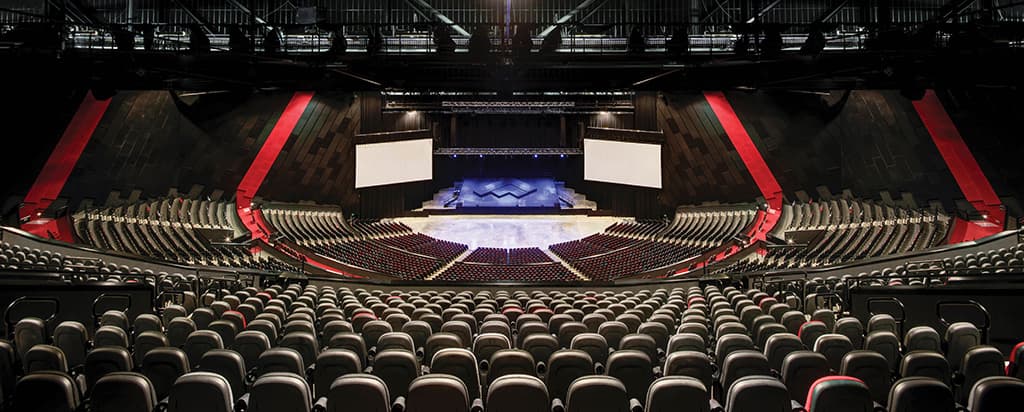
ICC SYDNEY THEATRE
The ICC Sydney Theatre is immense. Not only does it host significant conference plenary sessions it also supersedes the role of the Sydney Entertainment Centre — few tears were shed when the wrecking ball hit the SEC.
The space adheres to the key ICC Sydney tenets of multi-use and ease of set up/break down. In a few short months since its debut, ICC Sydney Theatre has played host to Keith Urban, PJ Harvey, Nick Cave, a tennis Fast Four match, and of course a plenary session or two.
Brian Nash: “All of our theatres have an advanced broadcast and technical panel infrastructure. From OB truck, to control rooms, to FOH positions to stage sides, to the catwalk level, there’s a massive infrastructure, some 650km of cable just in the technical plates alone.”
The wall plates carry SDI and SMPTE 311M for video, a structured Cat cable, fibre, as well as traditional audio tielines. To distinguish the AV cabling in and between the theatres, they’re all colour-coded purple. If for whatever reason, cables are inadvertently cut, the purple hue of the cabling will signal ‘Danger Will Robinson!’ for Brian and his team.
There’s a retractable tier of seating at floor level, that raises the capacity to a maximum of 9000 people when deployed.
In its plenary mode, often a conference will feature a large (14m-20m) edge-blended backdrop on stage and two large screens either side of the proscenium for IMAG. Two 20K Panasonic projectors take care of that task.
From a PA perspective, the brief was for the house system to be capable of managing the sound for at least 70% of booked events.
The full gamut of Theatre events will take in large-scale concert touring acts which will simply want to know where the loading dock is, the location of the power and the rigging points. Others, such as the DJ during the Fast Four exhibition tennis event will happily plug straight into the house rig without additional sound reinforcement. Still others will bump in the main left/right rig and hire the house side hangs and delays.
Mark Shaw: “ICC Sydney Theatre was designed to be a thoroughbred auditorium for amplified sound. It needed to be very absorbent and super-easy to use. The electroacoustic modelling we did back in 2013 included the carpet and seats; we modelled it two-thirds full, we modelled the wall panels, the entire soffit insulation, the plant room insulation, the stage drapes, the under balcony treatment… and in reality The Theatre is almost exactly as modelled by ASL. The STIs are the same. Normally there will be a litany of alterations during the design and build process. Not so with The Theatre: it’s a true multifunctional theatre and from Day 1 the design has not changed.”
The DS2 specified a d&b V Series PA with d&b amplification and touring carts so the rig can be quickly deployed or removed. According to Brian Nash, the full house PA can be rigged and ready in under three hours.
SFJV and d&b measured the Theatre’s sound from 96 different locations. The State brief mandated 105dB ±10dB for every seat and a speech intelligibility metric of at least 0.5. Thanks to a well-designed venue — acoustically and electroacoustically — The Theatre boasts an STI of 0.7-0.8 throughout… even under the balconies.
Nick Orsatti: Credit should go to Lendlease, Jerome Johnson in particular, in having the wisdom to listen and act on ASL’s (Simon Lappas in particular) advice on getting the room right. I think as an industry it’s good to acknowledge when the client/builder understands the importance of these details.

ICC SYDNEY THEATRE PA DETAILS
The NAS Projects Team provided support during the commissioning phase. Gert Sanner from d&b HQ flew out for the commissioning as well.
Dave Jacques is head of the NAS Projects Team: “The biggest part of our job was in the implementation; as the gear went in we worked with Fredon to help get the most out of the PA. It was a great experience in that regard: the Fredon team was very keen to get a good result. Sometimes there’s a temptation on behalf of the installer to knock something like this out and not worry too much about the detail. In this case everyone was very focussed on the detail.
“The ICC Sydney Theatre PA is based on two large d&b V Series arrays per side. The side arrays aren’t much shorter than the main hangs, and this is down to just how large and wide the theatre is: you have to push a lot of energy to the sides to cover those areas.
“The SPL targets of the brief were lofty. Fortunately, the design provided an adequate number of loudspeakers and wasn’t cut back at any stage, as is often the case — we needed a serious system to meet those targets (105dBA ±10dB with 10dB headroom).
“We hit those SPL targets with something to spare. That was really nice to see in the flesh; to see that the modelling and the EASE data is trustworthy.”
Along with the four speaker arrays the design encompasses a flown array of V Subs either side of stage. Flying, rather than stacking, the subs was always going to be the preferred method, given the tiered design of the theatres. The long array of subs provides greater pattern control and more efficiency in the far field. The sub array sits in behind the main hang and not so far from the side hang. The distances are such that the three arrays operate as one line source in the lower frequencies.
Dave Jacques: I’ve had feedback from people who have mixed in ICC Sydney Theatre and they’ve commented that they’ve looked at the space and looked at the arrays and thought ‘I’m going to need a pile of ground stacked subs’, but it’s not the case — it fills the space nicely. I was very pleased with the results — there’s an even fullrange feel.
Often the lower tier of seating will be retracted but when those seats are deployed, there are some additional V Subs in the inventory that can be ground stacked to fill in the nearfield. There are also a number of additional V Series array boxes that are positioned at stage level and shoot into the lower bowl. Sound for the stage level V array boxes are timed to arrive slightly earlier than the main arrays to pull the image down to the stage.
d&b D80 power the whole system. It’s effectively a touring system with touring amp racks, allowing for easy reconfiguration.

DIGITAL SIGNAGE & INTERACTIVE DISPLAYS
The main public entry to the theatre building is lined with LED. Dubbed the Bird’s Mouth (right), there’s some 250sqm of LED intricately installed in and around the entrance way. The media and pixel mapping is managed by a Christie Coolux server. A system of convention cooling helps the Bird’s Mouth to breathe, allowing hot air produced by the display to efficiently exhaust to ensure smooth operation.
All up, there are 28 LED exterior screens throughout the precinct including the freestanding blade structures on the harbourside.
A real highlight is a 100m-long artwall in Moriarty Walk. The digital artwork was commissioned by Rioji Ikeda. The aspect of the LED wall ensures it doesn’t receive any direct sunlight, and means the screens chug away at no more than 15% of its available brightness.
Big Screen Projects was engaged as the digital signage installation specialists, headed up by Toby Waley.
Nick Orsatti: Big Screen Projects’ live events expertise was instrumental to the success of the digital signage execution. They know how to build these structures in such a way that they can be easily serviced and managed. These aspects can be overlooked in a permanent installation, but can really bite you down the track if you’re not careful.
ELECTROACOUSTIC PRIORITIES
You’d expect a consultant with ASL’s credentials to take its acoustic modelling and measurements seriously. But what was unexpected and heartening for a large project such as ICC Sydney was that the initial State brief took electroacoustics — the amplified sound of the venue — very seriously indeed. And as touched on by Mark Shaw, not just the showpiece plenary theatre but every space.
Mark Shaw: Every hireable space was electroacoustically modelled. ASL’s Aleksandra Deren performed an enormous amount of EASE modelling. We factored in the room finishes, specified the speaker model, the locations, specified the angles, and the acoustic treatment, all to be approved by the independent verifiers of the State then installed and tested.
The level of detail in the specifications meant if the integrator proposed the use of an equivalent product they would have to remodel everything from scratch. The selection process was detailed and exhaustive. Every product was selected with a number of factors in mind — performance, aesthetics, EASE date, budget, and single vendor risk mitigation — and it was all decided on early in the piece.
HIGH STAKES
Demolishing SCEC and starting again was a brave move. The brand new ICC Sydney had to be demonstrably superior to SCEC and indeed to any of the alternatives in Australia. MCEC won’t be panicking; it’s booked out for years to come. But being booked out isn’t necessarily the main game, it’s attracting the super-primo events. It’s the Bill Clinton keynote, the world congress of anaesthetists, the international launch of the next Tesla luxury coupe… The cachet of staging Australia’s highest profile events and concerts is significant.
AV has never been more crucial to the success of event production. Being seen and heard is obviously the baseline requirement, but now it’s just as important to ensure that the event buzz ripples through cyberspace.
ICC Sydney showcases the AV state of the art. It’s a posterboy for making good on the ‘convergence promise’. Fascinatingly, convergence didn’t require a blindfolded step off the cliff in faith, nor did it see a bunch of traditional AV roles being fulfilled by IT professionals with no deep knowledge of AV. Success is reliant on product vendors who understand ICT constraints and ensure their product suite works within that framework, and system specifiers and integrators that share the same deep knowledge of both AV and IT, and have the knowledge and experience to design and implement them to meet the client’s requirements.
A truly landmark project provides an AV milestone — a yardstick for the industry. In 2017, ICC Sydney is that AV monument.

QLAN NETWORK
Ewan McDonald, Technical Audio Group’s Q-SYS System Sales Specialist, reflects on the task of ensuring AV is given its best chance on the network.
Ewan McDonald: The biggest issue we come across is getting the network guys to understand how important QoS is on the network. The way QLAN is set up, audio clock packets have the highest priority on the network, the actual audio packets, then the control packets.
Most network guys are just not used to QoS and managing multicast on the network. They’ll look at the bandwidth and think — well that doesn’t look like much — but don’t realise that there are 48,000 clock packets they need to get from end to end in 333 microseconds across the network. If the QoS is not set up properly and the multicast not managed properly on the network, then it can be a real problem.
STANDING UP FOR THE PRESENTER: THE SMART LECTERNS
Mark Shaw and Nick Orsatti have reflected on the fact that ICC Sydney is one of those ‘once in a lifetime projects’ and there are many reasons to bask in some professional pride. Interestingly, it was the ICC Sydney lectern design that rates highly as something they’re most pleased with.
Nick Orsatti: The design was a real team effort. The lecterns had to look great, be functionally very capable and reflect the needs of a contemporary BYOD client.
Mark Shaw: Think of it as a portable equipment rack for the room, housed in an architecturally designed smart lectern.
In other words it’s a super-smart, custom-made, oak-clad, 19-inch rack housing.
Nick Orsatti: On the low-tech side, there’s space for 2 x A4 pieces of paper, a glass of water, and somewhere to put a laptop (conspicuously on top or tucked away), and a USB port for somewhere to plug in a device.
There’s a built-in NUC-style computer, networked back to as a presenters’ preparation area, which means they can test their presentation and put it on the network ready to pick up when they’re in the meeting room. Or they can bring in a USB stick or plug in their own laptop.
Audio is all wireless. Using Shure MX series, operating in the 2.4GHz range. They’re network based and operate outside the traditional wireless spectrum, which has advantages. There are a number of wireless mic scenarios catered to. We can provide a lectern mic, a lapel or both. There are racks for two wireless channels, four channels or eight.
A generic tablet running Crestron X Panel software provides easy control for the presenter.
For the theatre lecterns the fascia can accommodate a display for dynamic branding. With it sitting on the network it’s simply another IPTV end point.
All that’s within the lectern and plugs into the floorbox via a power lead, and two Cat cables — one for the Crestron HDBaseT DM video and the other for everything else.
The set up provides flexibility in terms of how large or sophisticated the presentation is and how self sufficient the presenter is.
Brian Nash: The events will have presenters of varying technical proficiency. One presenter might be happy muting their own mics and won’t need an operator. Others will need an operator. In that case we can grab the mic kit and connect to a floor box at the back of the room. The video input can be plugged into the back of the room as well.
The rooms sound good and the smaller one in particular won’t always need sound reinforcement. If you remove the cart from the lectern you still have the video capabilities available.


PRODUCTION EQUIPMENT HIGHLIGHTS
ICC THEATRE
PA
Front Hangs:
44 x d&b V8 boxes
8 x d&b V12 boxes
16 x d&b V Subs
Delays:
10 x d&b V8 boxes
10 x d&b V12 boxes
5 x d&b V Subs
Under Balcony:
8 x d&b T10 boxes
Floor Mounted In-Fill:
2 x d&b V8 Boxes
6 x d&b Xt10 boxes
8 x d&b V Subs
Mixing Consoles:
Digico SD10 (FOH), SD8 (monitors) SD11 (control room)
VISION
A combination of 12.2m x 6.8m or 20m x 6.8m screens.
20k Panasonic projectors and vision switching
LIGHTING
Large inventory of Selecon fresnels & ETC Source 4 profiles
Martin Mac Quantum profiles & XLED 3019 wash moving lights
Jands HPC12 dimmer racks and 48-way dimmer racks
Chroma Q LED batons
4 x Robert Juliet Merlin follow spots
DARLING HARBOUR THEATRE
PA
Front Hangs:
16 x d&b V8 boxes
4 x d&b V12 boxes
6 x d&b V Subs
Under Balcony:
8 x d&b xS 8s Boxes
Floor Mounted Infill:
8 x d&b xS 8S boxes
Mixing Consoles:
Digico SD8 (FOH), SD8 (monitors) SD11 (control room)
VISION
9.1m x 4.9m motorised screen (centre)
2 x 24.0 x 13.5m flown side screens
Combination of 20k and 12k Panasonic projectors and vision switching
LIGHTING
Large inventory of Selecon fresnels & ETC Source 4 profiles
Martin Mac Quantum profiles & XLED 3019 wash moving lights
Jands HPC12 dimmer racks and 48-way dimmer racks
Chroma Q LED batons
3 x Robert Juliet ‘Merlin’ follow spots
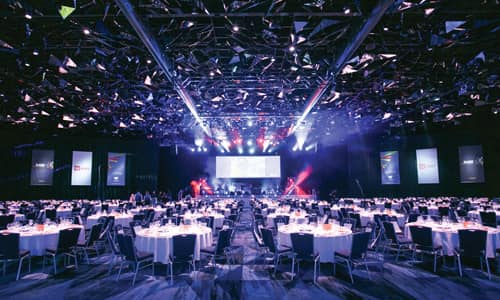

PYRMONT THEATRE
PA
Front Hangs:
20 x d&b T10 Boxes
4 x d&b T-Subs
Delay:
8 x d&b T10 boxes
Floor Mounted Frontfill:
8 x d&b xS 4S boxes
2 x d&b V Sub
Mixing Console:
Digico SD9
VISION
6.1 x 3.3m centre screen
20k Panasonic Projector
LIGHTING
Large inventory of Selecon fresnels & ETC Source 4 profiles
Martin Mac Quantum profiles & XLED 3019 wash moving lights
Jands HPC12 dimmer racks and 48-way dimmer racks
Chroma Q LED batons
2 x Robert Juliat ‘Horrigan’ follow spots.
GRAND BALLROOM
PA
Front Hangs:
12 x d&b V8 boxes
2 x d&b V12 boxes
6 x d&b V Subs
VISION
Combination of screens including 7 x 5.5m x 3.1m projection surfaces with 12k Panasonic projectors
20m blend screen also available
LIGHTING
Large inventory of Selecon fresnels & ETC Source 4 profiles
Martin Mac Quantum profiles & XLED 3019 wash moving lights
Jands HPC12 dimmer racks and 48-way dimmer racks
200 x XLED3007 moving heads to pin spot tables


VENUE WIDE
All spaces equipped with ClearCom FreeSpeak II comms systems
200 x Movecat pluslite 1000kg and 500kg chain motors
Hundreds of F34 and F54 3m-length truss


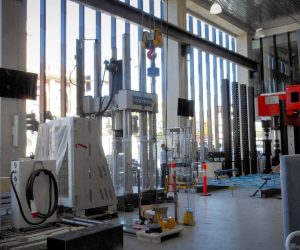
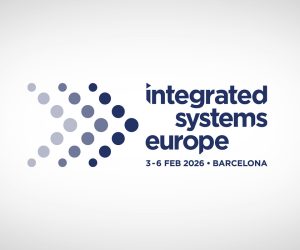
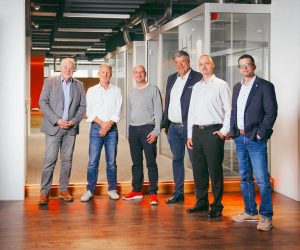

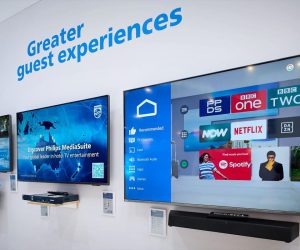

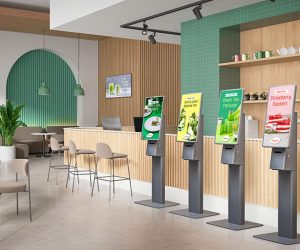

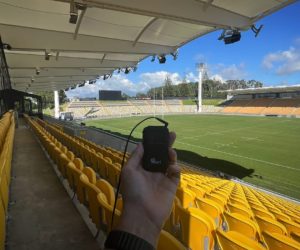




RESPONSES